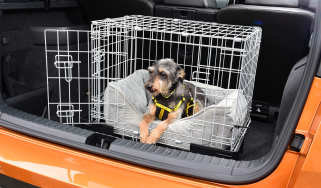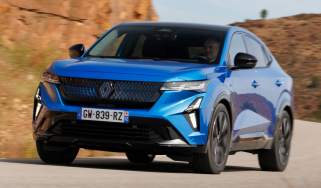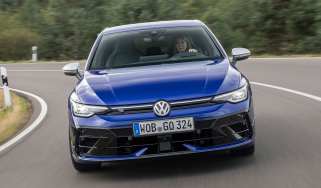Driving in Spain: top tips
If you’re driving in Spain, read our guide for advice, top tips and a handy vehicle checklist
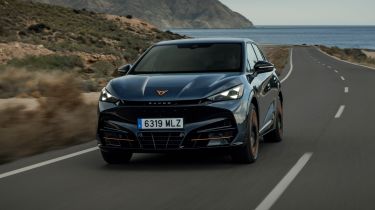
British tourists who drive in Spain fall into two categories: those who flew there, and those who drove there. Either way, driving in Spain offers motorists beautiful views, wonderful weather and great roads – but if you’re thinking of doing so, there are a few differences you need to be aware of, compared to driving in the UK. Thankfully, we’ve covered everything you need to know before you arrive.
If you are driving to Spain from Britain, you must hold a full UK driving licence, but do not need to obtain an International Driving Permit or green card insurance. You must also ensure that your car insurance policy covers you for driving in Europe and have third-party cover as a minimum.
There are, of course, far more people who fly to Spain than drive, so naturally there is a great number of car hire companies to choose from – you only need search for ‘car rental Spain’, ‘car hire Spain’ or ‘car hire Spain compare’ on Google to get an idea of what’s out there.
Knowing the road rules and regulations along with the local driving etiquette is essential to remaining safe and legal. That includes being ready for Spanish road tolls and looking out for unique Spanish road signs.
Unfortunately, many drivers don’t bother with some of the basics, and that’s how you can get into trouble. Whether it’s an unsafe manoeuvre because you didn’t understand the road sign, or something much less obvious like the need to carry a spare pair of spectacles for the driver, there are pitfalls for even experienced Spanish drivers. So read on for our handy guide to driving in Spain, and make sure you’re safe and complying with the law with our handy Spanish driving checklist.
Read on for our detailed guide to the documents, equipment and road etiquette you need to bring with you to Spain...
Which documents do I need for driving in Spain?
When driving in Spain, you’ll need to make sure you have certain documents with you to avoid facing a potential fine or a penalty:
- A full and valid UK driving licence.
- Proof of vehicle ownership and your V5C registration document.
- Proof of identity in the form of a passport or national identity card.
- If you are driving to Spain in a rented vehicle or company car, you’ll need to apply for a VE103 certificate. This can be obtained from the lease or hire company or a motoring organisation such as the British Vehicle Rental and Leasing Association (BVRLA), AA or RAC for a small fee.
All documents must be original copies and not screenshots, pictures or photocopies. UK drivers heading out to Spain no longer need a motor insurance Green Card or an International Driving Permit.
What equipment do I need to carry in my car when driving in Spain?
When driving in Spain, all cars are required to carry certain items in your car or you risk facing a penalty or a fine if you’re caught without them. You’ll need to carry two warning triangles which need to be placed at the front and the back of the car in the event of a breakdown.
Headlamp beam deflectors are another must for UK drivers in their right-hand drive cars. High-visibility jackets are not mandated by law, but if you are caught walking on the hard shoulder of the motorway without one you’ll be fined, so make sure you have one for each occupant.
Under Spanish law, you are required to have a spare wheel and the tools needed to change a flat car tyre. If your car does not come with a spare wheel, you’ll need to make sure you have a car tyre puncture repair kit.
If you need to wear glasses while driving, you’ll have to carry a spare pair in the car with you. You must display a white ‘UK’ sticker on the back of your car if you don’t have a UK or union flag identifier on your numberplate. Older style ‘Euro-plates’ from before the UK left the European Union and GB stickers are no longer sufficient.
What equipment am I not allowed to use in my car when driving in Spain?
Speed camera and radar detectors are prohibited under Spanish law. Any motorist caught in possession of these faces a fine of €200 (£165 at the time of writing) and the addition of three penalty points to their licence. Drivers using radar jammers face even stricter punishments, with fines of up to €6,000 (£4,947) and six penalty points. However, sat-navs with speed camera location warnings have yet to be outlawed.
The use of mobile phones or the driver wearing any type of headphones while driving is strictly prohibited, but hands-free devices are still allowed within Spanish road laws.

Driving in Spain checklist:
Make sure you’ve got all the right documents and in-car kit…
- Full and valid driving licence
- V5C registration document
- VE103 certificate if you’re driving a company car or rented vehicle
- Proof of Insurance
- Passport/national ID
- Reflective jackets for every occupant
- Two warning triangles
- Spare pair of spectacles (for those who use glasses while driving)
- Headlamp beam deflectors
- UK car sticker or union flag identifier (older GB symbols or older-style GB/EU stickers are no longer acceptable)
What is the drink-driving limit in Spain?
You don’t need to worry about buying a breathalyser kit for driving in Spain, but you should make a note of the more stringent drink-drive limits. The blood alcohol limit in Spain is 0.05 per cent and an even lower 0.01 per cent for drivers with less than three years of experience.
Spanish Autopista tolls and petrol prices
Like other central European countries, Spain houses an impressive motorway network. Autovías motorways are state-owned and are free to drive on, whereas privately owned Autopistas are complete with tollbooths to charge you for the privilege. The fees are at a similar level to those in France and Italy, with toll charges in the region of €10 (£8.25) per 100km driven.
Cars towing a caravan or a trailer will pay the same fees as normal cars for motorway use in Spain. The tolls are only on A-signed roads, and anyone wishing to save a little money can use the E-signed roads; these are the Spanish equivalent of UK A roads.
While you may have to shell out on motorway travel, you’ll make back the money at the fuel pumps. Spanish petrol stations are a welcome sight for UK drivers, with petrol and diesel costing less on average.
Driving in Spain: insurance and breakdown cover
Most UK insurance companies allow for 90 days of cover in EU countries – but the majority will only provide it on a third party basis. Confirm the type of insurance cover you will have in Spain before you leave.
Unlike insurance, breakdown cover is not a mandatory requirement in Spain. It is nevertheless a welcome addition to any long journey and adds some peace of mind should the worst happen. The bigger breakdown providers will do Europe wide coverage, but this is often an add-on to the basic policy. Check with your provider the type of cover you have, and if necessary you can purchase single trip cover online.
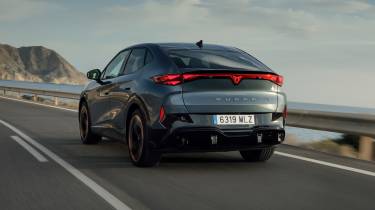
Driving in Spain: top tips
Speed limit leeway for overtaking
The national speed limit on motorways is 120km/h (75mph for context), and those looking to overtake you will often flash their lights in anticipation. On smaller roads with one lane in each direction, drivers are allowed to exceed the speed limit by 20km/h (12mph) when overtaking a slower vehicle.
Use those indicators
Spanish authorities have also started to enforce indicating while changing lanes or road position – this is something some UK drivers need to readjust to.
Take care in towns
Unless the traffic signs say otherwise, the speed limit drops to 50km/h (31mph) when you reach most cities and towns. Spanish cities are often congested and it’s not unusual to be surrounded by mobs of scooters edging into the oncoming traffic. At first the driving style can take some getting used to, but on the whole, Spanish drivers are friendly and courteous.
Beware of Low Emission Zones (LEZ)
Like the UK, many Spanish towns and cities have introduced Low Emission Zones, or Zonas de Bajas Emisiones (ZBE) in Spanish. For example, to drive in Barcelona or Madrid, your car must comply with Euro 3 petrol or Euro 4 diesel emissions standards as a minimum. Other locations might have different requirements, so it’s best to check beforehand.
You’ll need to register your car before you enter a ZBE zone, and if it doesn’t comply you’ll need to buy a permit. Permits cost a few euros and can be purchased online or from Spanish Post Offices, but do take up to 15 days to be processed. Instant permits are limited to 12 per year. Failure to register your car or buy a permit can result in a fine.
Enjoy the coastal roads
The southern coastal roads are a treat to any driver, and they stop by some of the biggest cities in Spain, too.
Preparing for a European road trip or fly-drive holiday in the US? We've covered everything you need to know for a hassle-free trip...
Driving abroad: everything you need to know...
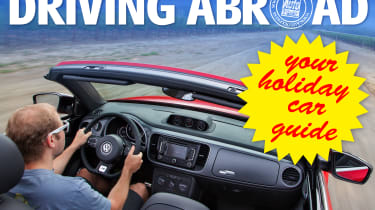
Find a car with the experts





